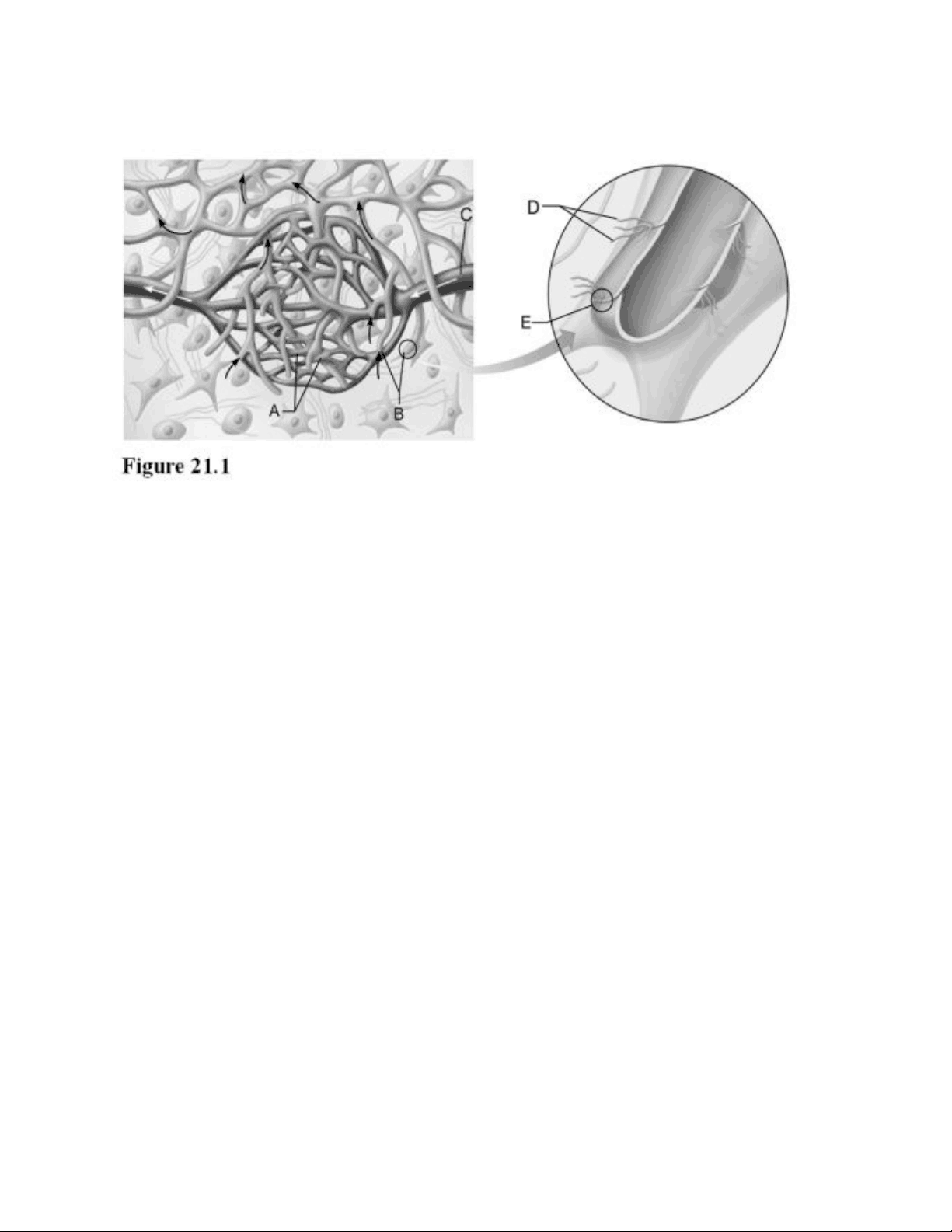
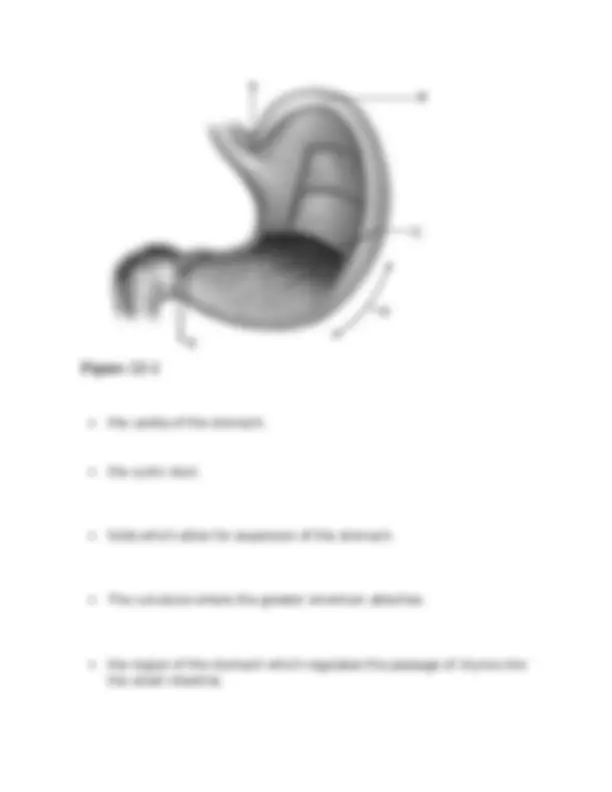
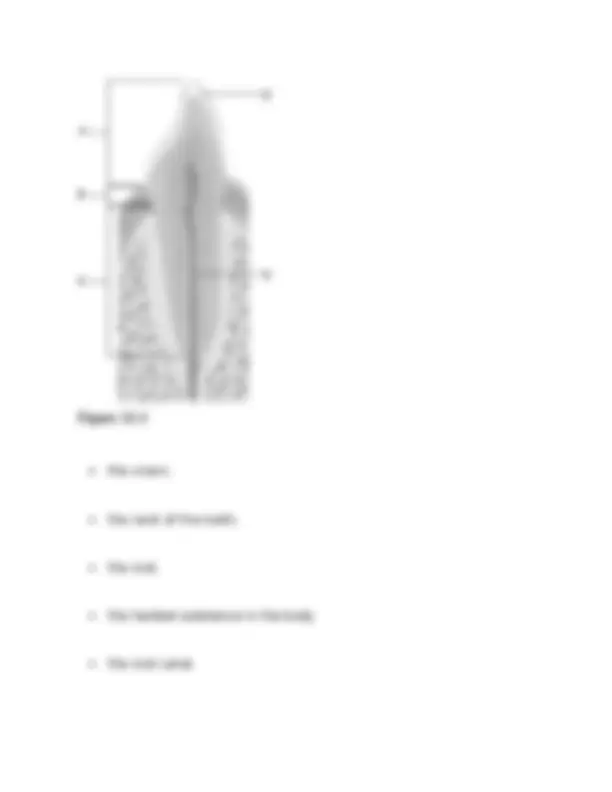
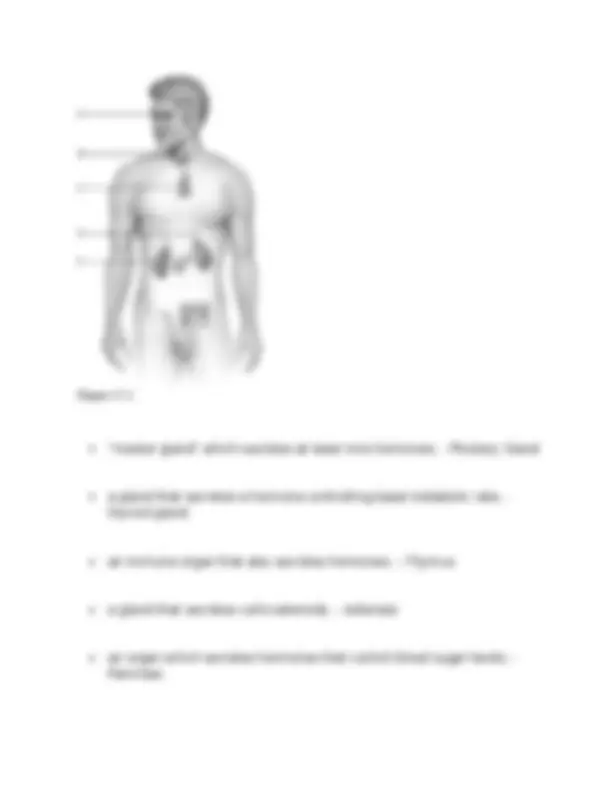
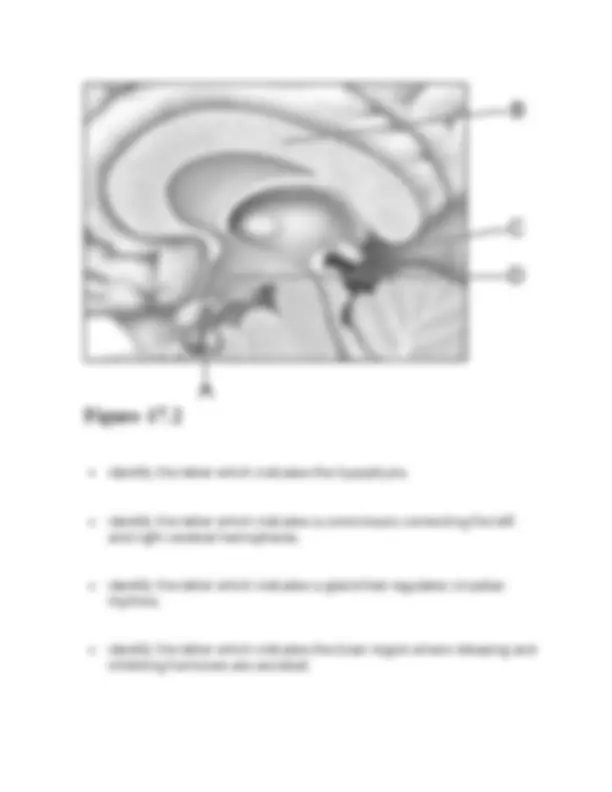
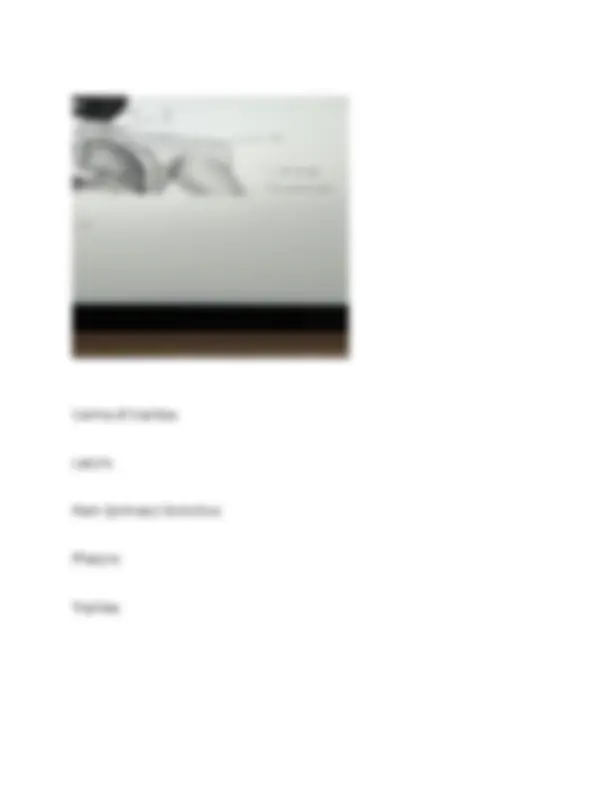
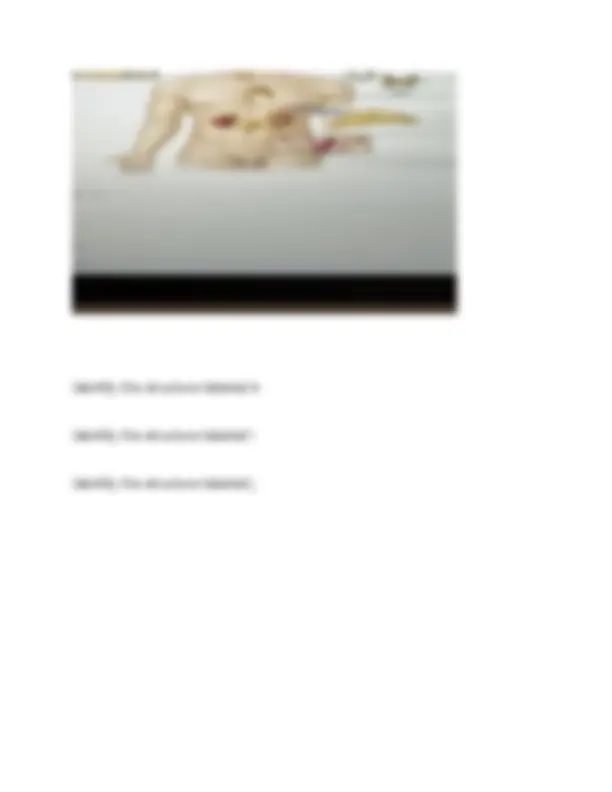
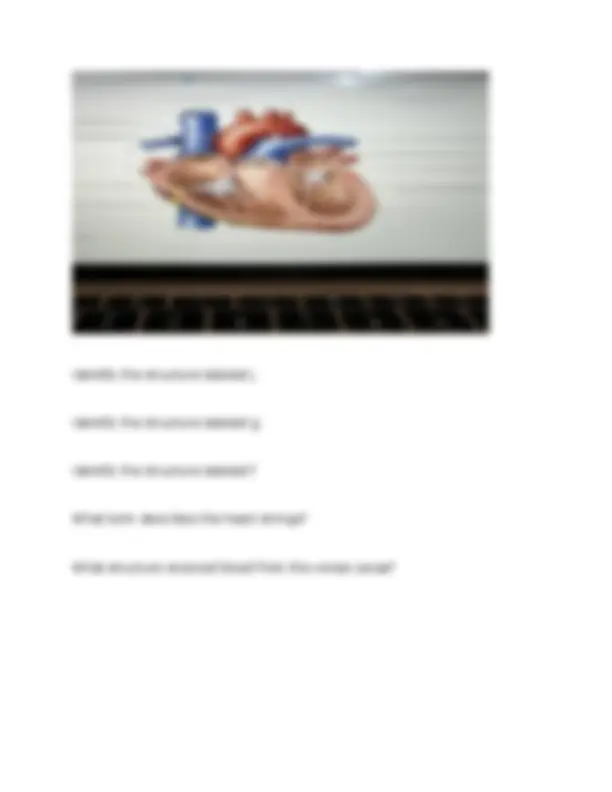
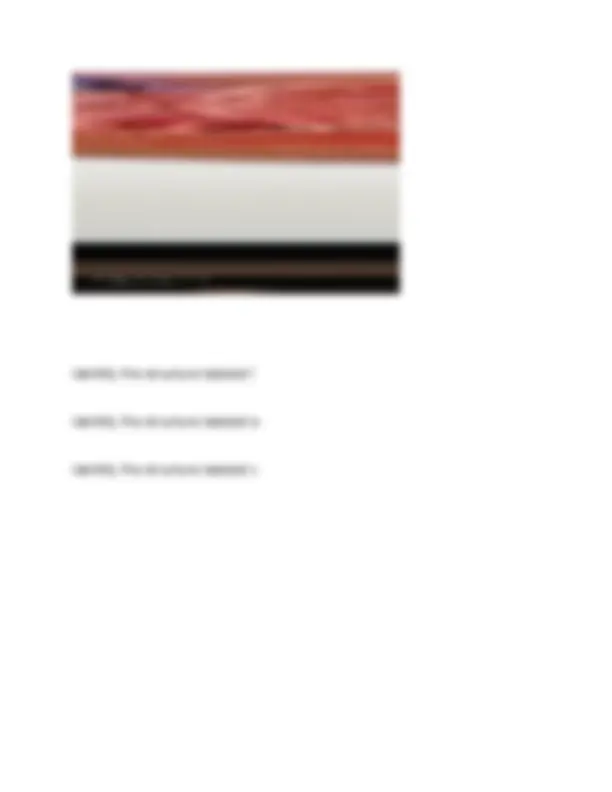
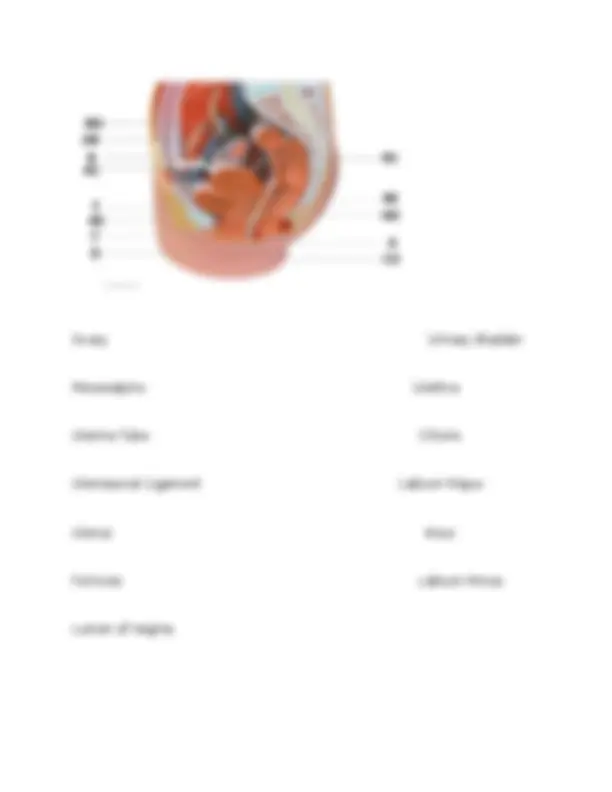

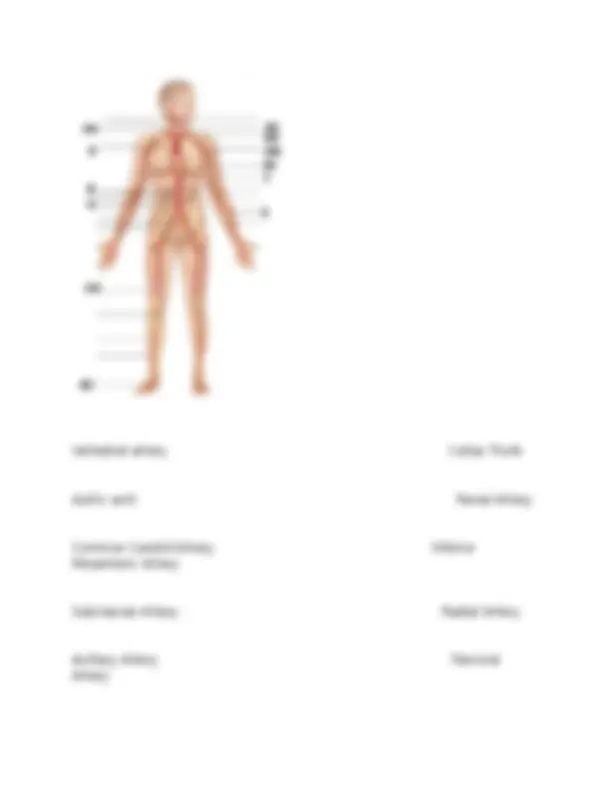
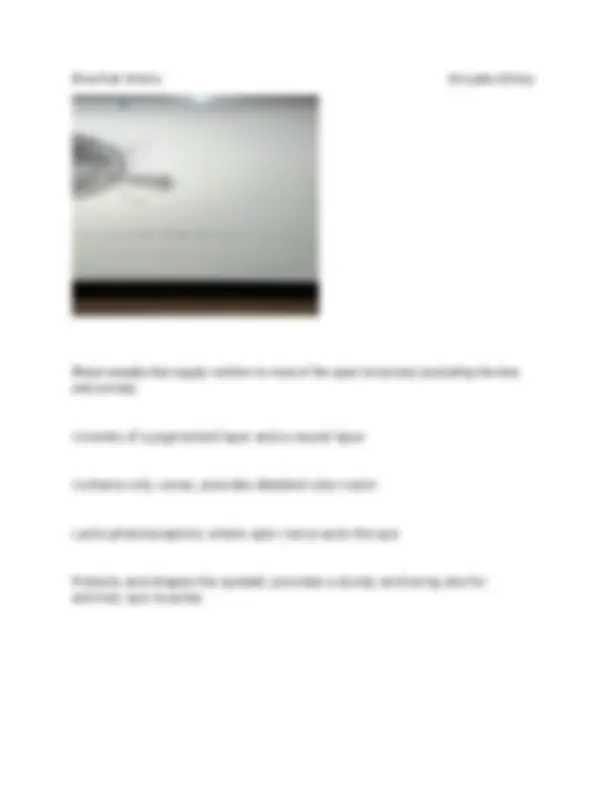

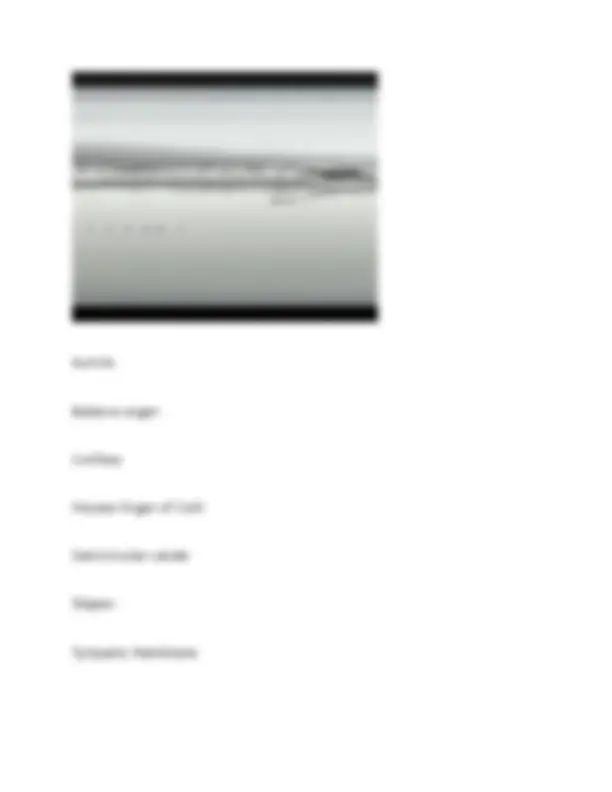
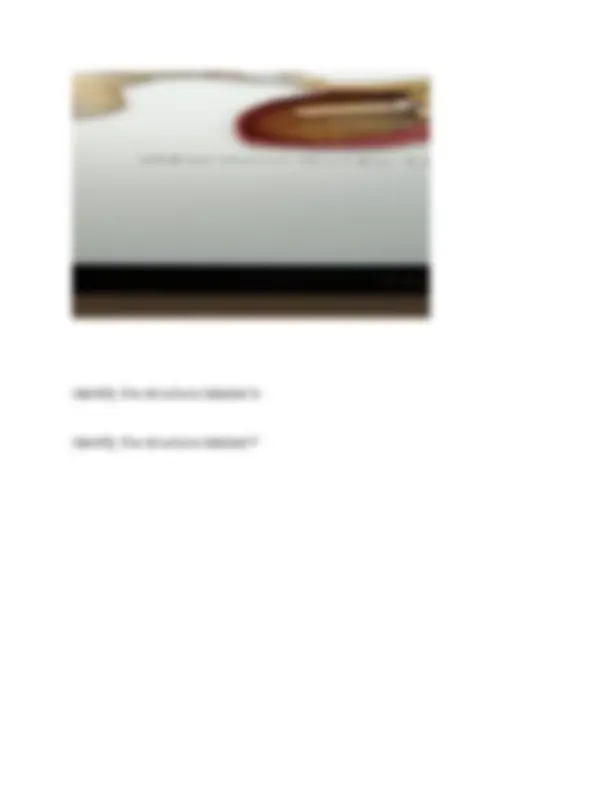
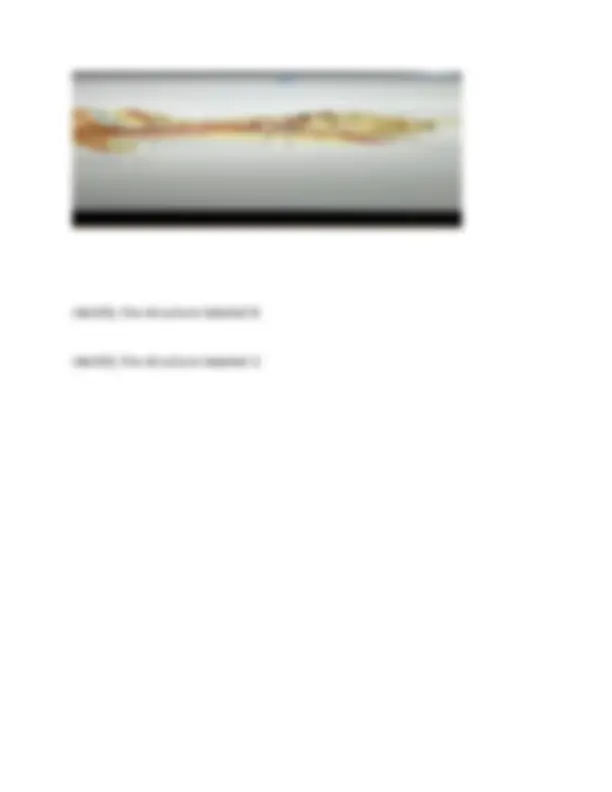
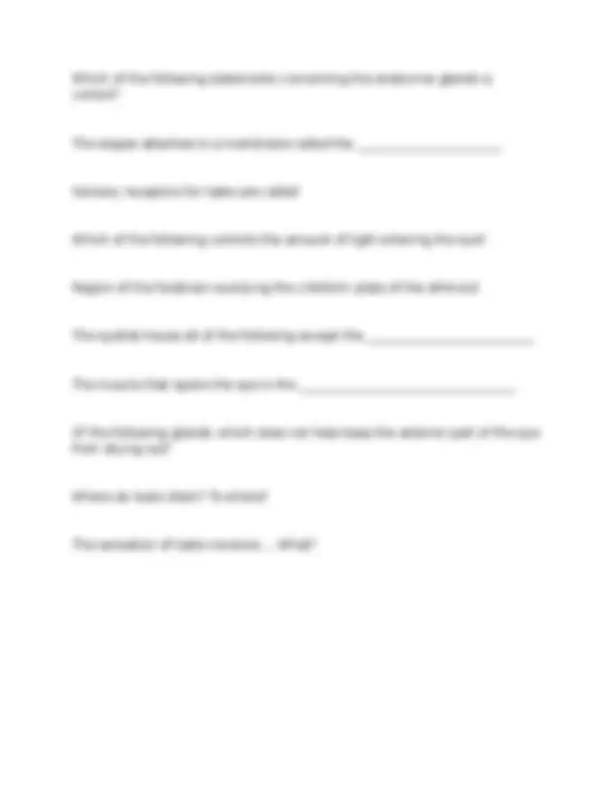


Study with the several resources on Docsity

Earn points by helping other students or get them with a premium plan


Prepare for your exams
Study with the several resources on Docsity

Earn points to download
Earn points by helping other students or get them with a premium plan
Community
Ask the community for help and clear up your study doubts
Discover the best universities in your country according to Docsity users
Free resources
Download our free guides on studying techniques, anxiety management strategies, and thesis advice from Docsity tutors
ANAT260 Lab Quiz Study Guide West Coast University/ANAT260 Lab Quiz Study Guide West Coast University
Typology: Exams
1 / 25

This page cannot be seen from the preview
Don't miss anything!


















Identify the letter that indicates: a vessel that carries deoxygenated blood away from peripheral tissues the smallest lymphatic vessel that collects lymph in the peripheral tissue a vessel that carries oxygenated blood to peripheral tissues collagen fibers that anchor lymphatic capillaries to surrounding connective tissue
the unique arrangement of endothelial cells that comprise lymphatic capillaries.
the crown. the neck of the tooth. the root. the hardest substance in the body. the root canal.
"master gland" which secretes at least nine hormones. - Pituitary Gland a gland that secretes a hormone controlling basal metabolic rate. - thyroid gland an immune organ that also secretes hormones. – Thymus a gland that secretes corticosteroids. – Adrenals an organ which secretes hormones that control blood sugar levels. - Pancreas
Follicle stimulating hormone Growth hormone Adrenocorticotropic Hormone Thyroid stimulating hormone Prolactin
Identify the letter which indicates the hypophysis. Identify the letter which indicates a commissure connecting the left and right cerebral hemispheres. Identify the letter which indicates a gland that regulates circadian rhythms. Identify the letter which indicates the brain region where releasing and inhibiting hormones are secreted.
Identify the structure labeled A Identify the structure labeled i Identify the structure labeled j
Identify the letter that indicates a cortical radiate artery. Identify the letter that indicates the blood vessels that delineate the cortex from the medulla. Identify the letter that indicates the blood vessel that branches from the abdominal aorta carrying oxygenated blood to the kidney. Identify the letter that indicates an expanded portion of the ureter. Identify the letter that indicates the major calyx.
Identify the structure labeled j Identify the structure labeled g Identify the structure labeled f What term describes the heart strings? What structure received blood from the venae cavae?
Identify the structure labeled l Identify the structure labeled e Identify the structure labeled c
Nasal Conchae Vestibular Fold Nasal Meatus Lingual Tonsil Nasal vestibule Uvula Hard Palate Soft Palate Epiglottis Posterior Nasal Aperture Thyroid Cartilage Vocal Fold
Urinary Bladder Ejaculatory Duct Prostate Gland Membranous Urethra Corpus Cavernosum Bulbo- Spongiosus Muscle Urethra Scrotum Corpus Spongiosum Glans Penis Testis
Vertebral artery Celiac Trunk Aortic arch Renal Artery Common Carotid Artery Inferior Mesenteric Artery Subclavian Artery Radial Artery Axillary Artery Femoral Artery
Brachial Artery Arcuate Artery Blood vessels that supply nutrition to most of the eyes' structures (excluding the lens and cornea). Consists of a pigmented layer and a neural layer Contains only cones; provides detailed color vision Lacks photoreceptors; where optic nerve exits the eye Protects and shapes the eyeball; provides a sturdy anchoring site for extrinsic eye muscles